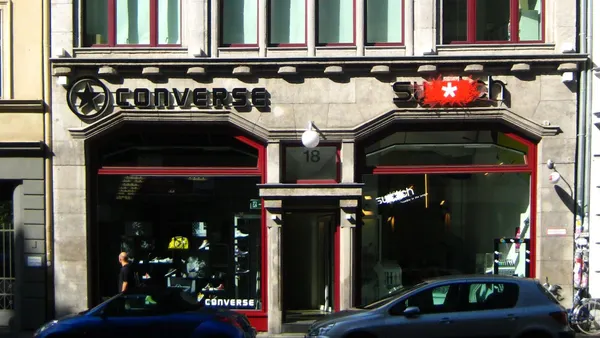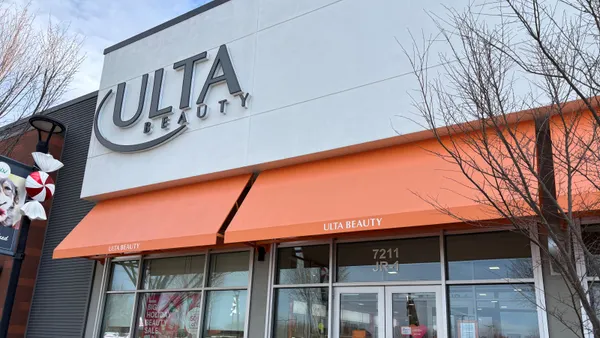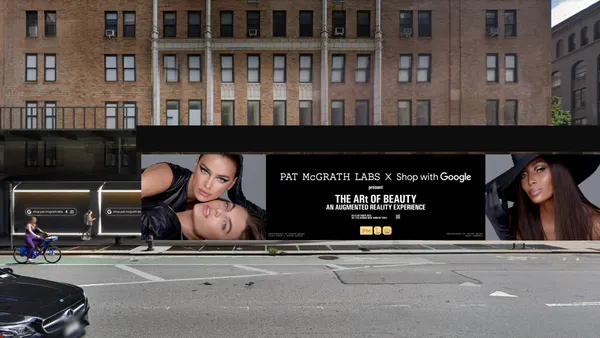Dive Brief:
-
The online apparel market has grown by a compound annual growth rate of 14% since 2012, a stark contrast from the 1% growth offline, according to recent research from Forrester's Sucharita Kodali, which was emailed to Retail Dive. The share of fashion spending transacted over the web (20%) outpaced online spending in retail overall (13%), according to the report
-
Fashion is now the second largest retail spending subcategory, growing from $375.6 billion in 2012 to $433.6 billion last year, when it made up 12% of the total retail market, Kodali said. Online pure plays, which had an annual growth rate of 23% and wholesale brands, which grew 7%, saw the most growth, outpacing department stores' 2% growth, she found. But, though subscription boxes show potential, adoption has been slow, considering that 18% of those surveyed said they're interested in them, but none are actually using one.
-
Despite the growth in online apparel spending, spending per household in the category decreased between 1990 and 2016, with the average household slicing its spending on fashion in half during that time, according to the report.
Dive Insight:
Department stores will have just 8% of the American apparel market in 2022, down from 24% in 2006, according to a prediction earlier this month from Morgan Stanley analysts, who noted that in particular Sears Holdings and Macy's are suffering in the category. But large mall-based chains, including those of Ascena Retail Group, L Brands, Ralph Lauren and Chico's, are also losing share, they say.
Forrester's report shows at least part of the reason why — and researcher Kodali found that many shoppers are going online for clothes and accessories seeking out lower prices.
"Empowered shoppers have pulled the rug out from under the second-largest retail subcategory, fashion, which comprises clothing, accessories, and footwear," she said in her report. "Pure plays and wholesale brands are surging, while small retailers struggle to maintain their market share. Falling prices are central to retailers' struggles as fashion occupies a shrinking slice of U.S. household budgets."
Amazon is a huge factor here, because the e-commerce giant has stoked its offering, because of its prices in the category and because of its locked-in Prime membership base (now at 100 million worldwide, as recently revealed by CEO Jeff Bezos). After taking another 1.5% of market share in U.S. apparel sales last year, Amazon is edging closer to becoming the nation's top apparel retailer, according to Morgan Stanley's note. And brands themselves in some cases — including Nike, Ugg and Calvin Klein — are moving to sell on Amazon rather than through department stores, the analysts said.
People go to Amazon for well-priced apparel, according to retail think tank Coresight Research, and Coresight founder and CEO Deborah Weinswig believes that Amazon is being perceived as an off-price apparel retailer. Half (48%) of Amazon apparel shoppers said they expect to pay less than full price when buying clothing or footwear on the site, 32% say they go there because Amazon offers the lowest prices and 49% say Amazon offers good value.
And there is plenty to find. Amazon has steadily worked to develop private label clothing in several segments and recently expanded its test of try-before-you-buy service, Prime Wardrobe, to address the pain points of not shopping in stores.
However, many rivals are making their own adjustments to apparel merchandising to compete. Target and Walmart, for example, have recently introduced new private apparel lines for women, men and kids.












